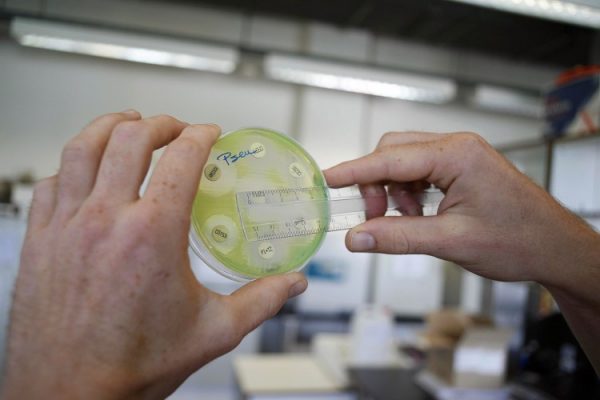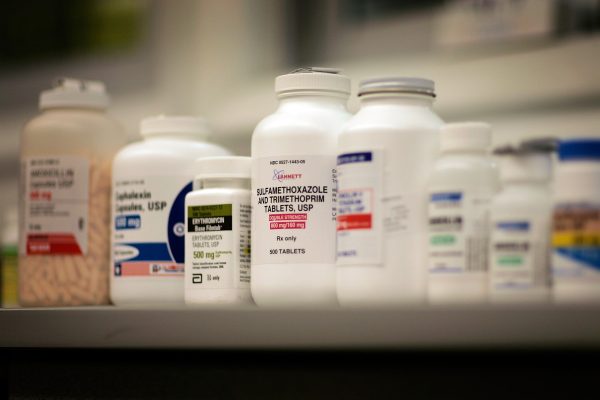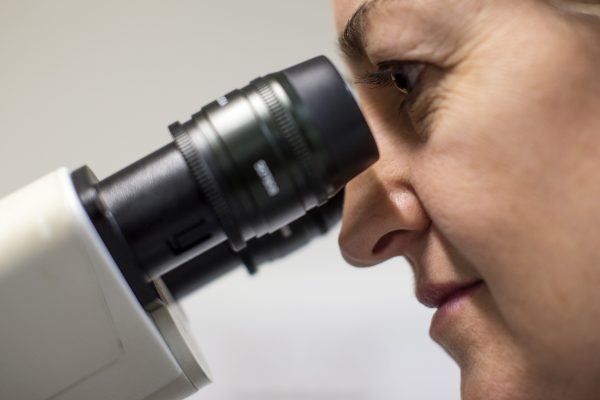By Dr. Mercola
For a number of years now, researchers have warned we are headed toward a post-antibiotic world — a world in which infections that used to be easily treatable become death sentences as they can no longer be touched by available drugs. As reported by NPR July 2, 2018:1
”A woman in Nevada dies from a bacterial infection that was resistant to 26 different antibiotics. A U.K. patient contracts a case of multidrug-resistant gonorrhea never seen before. A typhoid superbug kills hundreds in Pakistan. These stories from recent years — and many others — raise fears about the possibility of a post-antibiotic world.”
In the video above, NPR explains how antibiotic resistance develops, and what can be done to stem the swelling tide of drug-resistant infections. Importantly, misuse and overuse must be reined in. Despite strong warnings, about 80 percent of the antibiotics sold in the U.S. are still given to livestock — not to treat acute infections but as a preventive measure, and as a growth promoter. This routine low-dose administration is a most dangerous practice, as it primes bacteria for resistance.
As explained in the video, when antibiotics are given, any bacteria that survive are now stronger and can more readily evade the drug the next time around. This is also why, when you’re given a course of antibiotics for an infection, the instructions will tell you to take the full course and not stop early. It’s important to eradicate all the bacteria before stopping, or else you risk developing an even harder-to-treat infection as surviving bacteria will have developed hardier resistance.
Highly Resistant Bacteria Are on the Move
Tests conducted in 2017 on nearly 5,780 antibiotic-resistant bacterial samples collected from hospitals and nursing homes revealed 1 in 4 samples contained genes known to confer drug resistance, and 221 of them, collected from 27 states, contained a particularly rare drug-resistance gene that confers a very high level of resistance.2,3
This hardy resistance gene was found in a number of different types of infections, including pneumonia, bloodstream infections and urinary tract infections (UTIs). Disturbingly, follow-up screening showed nearly 1 in 10 asymptomatic contacts tested positive for drug-resistant bacteria carrying this rare gene, which means it can, and likely has, spread to other patients who have come into contact with an infected individual.
The emergence and rapid spread of this new drug resistance gene is deeply troubling, as it can cause untreatable infections where supportive care is the only option.4 With intravenous fluids, you may recover as long as your immune system is strong enough. If your immune function is weak, the infection could turn lethal. It’s hard to fathom a situation where people are routinely dying from UTIs and pneumonia — both of which have for decades been easily treatable with antibiotics — but that’s where we’re headed.
Drug-resistant sexually transmitted diseases (STDs) are also on the rise, making STD infection a very serious concern, especially as prevalence has also sharply increased in recent years. In California, STD prevalence has increased by 45 percent in the past five years alone.5,6,7
Gonorrhea, Syphilis and UTIs Becoming Increasingly Resistant to Treatment
There’s now evidence showing syphilis and gonorrhea are developing pan-resistance, meaning they’re impervious to several different antibiotics. Drug-resistant UTIs are also on the rise, and the spread of antibiotic-resistant UTIs has been directly linked to the consumption of chicken meat contaminated with drug-resistant bacteria.
• Syphilis has developed resistance against azithromycin, the second drug of choice for this infection,8 and recent research9 shows both of the two main strains of syphilis have developed drug resistance. The Street Strain 14 (SS14), which is a newer strain, appears to be far more drug-resistant than the older Nichols strain.
A whopping 90 percent of the SS14 samples had drug resistance genes. The number of babies born infected with syphilis contracted from their mother has also quadrupled and, with it, stillbirths have spiked as well.10
• Gonorrhea is now resistant to all antibiotics that have been used against it — including penicillin, tetracycline and fluoroquinolone antibiotics — and is rapidly developing resistance against cephalosporins, the drug of last resort. Resistance to cefixime and ceftriaxone has already been reported in more than 50 countries.
As noted by Dr. Teodora Wi, medical officer of human reproduction at the World Health Organization (WHO),11 “The bacteria that cause gonorrhea are particularly smart. Every time we use a new class of antibiotics to treat the infection, the bacteria evolve to resist them.” In 2013, the U.S. Centers for Disease Control and Prevention (CDC) estimated about one-third of gonorrhea cases were resistant to at least one antibiotic. Between 2013 and 2014, cases of antibiotic-resistant gonorrhea suddenly doubled.12
• A form of E. coli known as extra-intestinal pathogenic E. coli or ExPEC is responsible for over 90 percent of UTIs,13 and DNA matching reveals many are caused by eating contaminated poultry.14,15,16,17 In other words, many UTIs are caused not through sexual contact with an infected partner but by zoonosis, meaning animal to human disease transfer.18,19,20 As early as 2005 papers were published showing drug-resistant E. coli strains from supermarket meat matched strains found in human E. coli infections.21
Of the 8 million UTIs occurring in the U.S. each year, an estimated 10 percent are resistant to antibiotics, making them life-threatening occurrences as the bacteria can travel from the bladder into your kidneys and onward into your bloodstream. Drug resistance has become common enough that doctors are now advised to test for drug resistance before prescribing an antibiotic for a UTI.
8 in 10 Supermarket Meats Are Contaminated With Fecal Bacteria, Many of Which are Antibiotic-Resistant
For a number of years now, tests have revealed meats are a source of drug-resistant bacteria, with factory farmed meats having the highest levels of contamination. This includes pork, beef and poultry. According to a 2017 report by the CDC, 22 percent of antibiotic-resistant illness in humans is linked to consumption of contaminated foods, and tests have shown ground beef from animals raised in concentrated animal feeding operations (CAFOs) is three times more likely to contain antibiotic-resistant bacteria than grass fed beef.22
This really is no surprise, since overuse of antibiotics in livestock is the primary driver of antibiotic resistance, and CAFOs routinely use antibiotics.23 Most recently, an Environmental Working Group (EWG) analysis of food testing done by the Food and Drug Administration (FDA) in 2015 reveals 83 percent of supermarket meats were contaminated with enterococcus faecalis (fecal bacteria), and a high percentage of them had antibiotic-resistant bacteria:24,25
• 79 percent of ground turkey samples were contaminated with drug-resistant enterococcus faecalis, 87 percent of which were resistant to tetracyclines, antibiotics deemed “highly important” by WHO, used in human medicine to treat bronchitis, pneumonia and UTIs; 73 percent of the salmonella found on ground turkey was antibiotic-resistant salmonella
• 71 percent of pork chops were contaminated with drug-resistant enterococcus faecalis, 84 percent of which were resistant to tetracyclines
• 62 percent of ground beef samples were contaminated with drug-resistant enterococcus faecalis, 26 percent of which were resistant to tetracyclines. One reason for the high contamination rate of ground beef has to do with the fact that it’s a mix of meat from thousands of animals.26 A single animal with drug-resistant bacteria can therefore contaminate large batches of meat
• 36 percent of chicken breasts, legs, thighs and wings were contaminated with drug-resistant enterococcus faecalis, 71 percent of which were resistant to tetracyclines; 1 in 5 strains of salmonella was resistant to amoxicillin, a type of penicillin, which as a class is designated as “critically important” in human medicine. Amoxicillin is the No. 1 antibiotic prescribed to children in the U.S.
Chicken Has Been Consistently Prone to High Levels of Bacterial Contamination
Over the years, food testing has shown that chicken is particularly prone to contamination with not just antibiotic-resistant bacteria but also other dangerous pathogens. Consumer report testing in 2007 found 80 percent of whole chicken broilers harbored salmonella and/or campylobacter,27 two of the leading causes of foodborne illness.
Retesting in 2010 revealed a modest improvement, with “only” two-thirds being contaminated with these disease-causing bacteria. Just 34 percent of the broilers tested clear of these two pathogens. The improvement didn’t last long.
In 2013, Consumer Reports28 found potentially harmful bacteria on 97 percent of the chicken breasts tested, and half of them had at least one type of bacteria that was resistant to three or more antibiotics. Salmonella contamination is of particular concern, as data suggests multidrug-resistant salmonella has become particularly prevalent.
And raw chicken has become a notorious carrier of salmonella, campylobacter, clostridium perfigens and listeria bacteria.29 Contaminated chicken and turkey also cause the most deaths from food poisoning.30
How to Protect Yourself Against Foodborne Drug-Resistant Pathogens
According to the EWG:
“Of the 14 antibiotics the FDA tested in 2014, salmonella had developed resistance genes to 13. E. coli developed resistance to all of them. This is concerning because the gene for resistance to an antibiotic — for example, tetracycline — can be passed from a resistant enterococcus indicator bacteria to a neighboring pathogenic salmonella bacteria, creating a resistant infection.
Currently, the FDA analyzes resistance trends in bacteria only for ‘combinations of medical importance,’ burying its head in the sand when it comes to how resistance spreads among bacteria.
We believe that bacterial resistance to a single antibiotic is superbug enough, and consumers shouldn’t have to wait for widespread, multiple-drug resistance and untreatable bacterial infections for the FDA to protect them. Now is the time for the federal government to get medically important antibiotics out of factory farms.”
In the meantime, what can you do to protect your health and that of your family? One obvious answer is to seek out the safest meat sources you can find. Your best bet is to buy directly from farmers who use antibiotics judiciously or not at all. Other tips include:
- If you buy meat in the grocery store, become a savvy label reader. Topping the EWG’s list of “most reliable” meat labels is the American Grassfed Association’s grass fed label.31 Labels to be wary of include “no antibiotic residues,” “antibiotic free,” “no antibiotic growth promotants” and “natural,” as none fully reveal a company’s use of antibiotics.
- Store meats away from fresh produce, thaw in the fridge rather than on the counter and avoid washing meats as this merely spreads bacteria around your sink and kitchen. Always cook meats thoroughly.
- Avoid buying raw chicken as the risk of it spreading dangerous bacteria around your kitchen and cross-contaminating other foods is extremely high.
- When eating out, ask if the meat was raised with antibiotics. Beef would probably be a safer bet than chicken, even if it’s not grass fed, just for the fact that chicken is so prone to so many different kinds of bacterial contamination, including foodborne pathogens and drug-resistant ones.
Ignorant Companies Like Sanderson Risk Human Health
A number of poultry producers have taken steps to cut down or eliminate antibiotics from their production, including Perdue, Tyson,32 Pilgrim’s Pride and Foster Farms. Perdue — which started cutting back on antibiotics in 2002 — clearly shows that meat can be profitably mass-produced without the use of antibiotics. The company also demonstrates that eliminating antibiotics can make the meat safer.
Perdue received the highest safety score in the 2010 Consumer Reports test33 mentioned earlier, which checked for the presence of salmonella and campylobacter in commercial chicken meat.
Fifty-six percent of Perdue’s chickens were free of both pathogens at that time, while 80 percent of Tyson and Foster Farms’ chickens tested positive for one or both bacteria. (Organic store brand chickens had no salmonella at all, but 57 percent still harbored campylobacter.) Even back then, Perdue’s exemplary success was attributed to its more stringent policies on antibiotics.
The only company that has refused to take any measures to curb their antibiotic use whatsoever is Sanderson Farms.34 Remarkably, the company decided to go public with its decision to continue using antibiotics instead, calling public health concerns about antibiotic-resistant bacteria “overblown,”35 claiming the antibiotic-free chicken trend is nothing but a marketing ploy devised to justify higher prices, and that not using antibiotics would be inhumane to the chickens.36
According to Lampkin Butts, president and chief operating officer of Sanderson Farms, “There is not any credible science that leads us to believe we’re causing antibiotic resistance in humans.”37 This stance is not only ignorant but also dangerous, and flies in the face of science. If you cause antibiotic resistance to develop in the animals, you’re inevitably causing it in humans. Literally millions of lives are at stake if we do not put an end to agricultural antibiotics.
Sanderson also tries to confuse people by pointing out that no commercially sold chicken, whether treated with antibiotics or not, will contain antibiotics by the time you buy it since the antibiotics must be stopped in time before slaughter in order to ensure the drugs are no longer in the animals’ system. However, this really doesn’t address the actual concerns about antibiotic use in chickens, because even if the antibiotics are no longer present in the chicken, the resistant bacteria ARE, and they are the primary problem.
The good news is that investors are now starting to apply pressure, urging Sanderson Farms to reconsider their use of antibiotics. According to Reuters,38 a proposal to end the use of medically important antibiotics for disease prevention in chickens “received the support of 43 percent of votes cast at the company’s annual meeting,” held February 15, 2018. That’s 13 percent higher than a similar proposal presented in 2017, when only 30 percent of investors voted to end the company’s use of antibiotics.
Strategies to Protect Yourself and Limit Spread of Drug-Resistant Bacteria
While the problem of antibiotic resistance needs to be stemmed through public policy on a nationwide level, the more people who get involved on a personal level, the better. On an individual level, you can help minimize the problem by focusing on:
| Infection prevention, with a focus on strengthening your immune system naturally. Avoiding sugars, processed foods and grains, promoting stress reduction and optimizing your sleep and vitamin D level are foundational for this. Adding in traditionally fermented and cultured foods is also important, as this will help optimize your microbiome. |
| Limiting your use of antibiotics. Any time your doctor prescribes an antibiotic, ask if it’s absolutely necessary, and keep in mind that antibiotics do not work for viral infections. For example, antibiotics are typically unnecessary for most ear infections, and they do not work on the common cold or flu, both of which are caused by viruses. |
| Avoiding antibiotics in food by purchasing organic or biodynamic grass fed meats and animal products. |
| Avoiding antibacterial household products such as antibacterial soaps, hand sanitizers and wipes, as these promote antibiotic resistance by allowing the strongest bacteria to survive and thrive in your home. |
| Properly washing your hands with warm water and plain soap, to prevent the spread of bacteria. Be particularly mindful of washing your hands and kitchen surfaces after handling raw meats, as about half of all meat sold in American grocery stores is likely to be contaminated with pathogenic bacteria. Avoid antibiotic soaps that typically have dangerous chemicals like triclosan. |
Common-sense precautions in the kitchen: Kitchens are notorious breeding grounds for disease-causing bacteria, courtesy of contaminated meat products, including antibiotic-resistant strains of E-coli. To avoid cross-contamination between foods in your kitchen, adhere to the following recommendations:
• Use a designated cutting board, preferably wood, not plastic, for raw meat and poultry, and never use this board for other food preparation, such as cutting up vegetables. Color coding your cutting boards is a simple way to distinguish between them
• To sanitize your cutting board, use hot water and detergent. Simply wiping it off with a rag will not destroy the bacteria
• For an inexpensive, safe and effective kitchen counter and cutting board sanitizer, use 3 percent hydrogen peroxide and vinegar. Keep each liquid in a separate spray bottle, and then spray the surface with one, followed by the other, and wipe off
• Coconut oil can also be used to clean, treat and sanitize your wooden cutting boards. It’s loaded with lauric acid that has potent antimicrobial actions. The fats will also help condition the wood
|
Natural Immune Boosters
For most infections, antibiotics are unnecessary. There are a number of different plants and natural remedies you can use to fight infections, and contrary to antibiotic drugs, these do not promote the development of drug resistance. Natural compounds with antimicrobial activity include:








